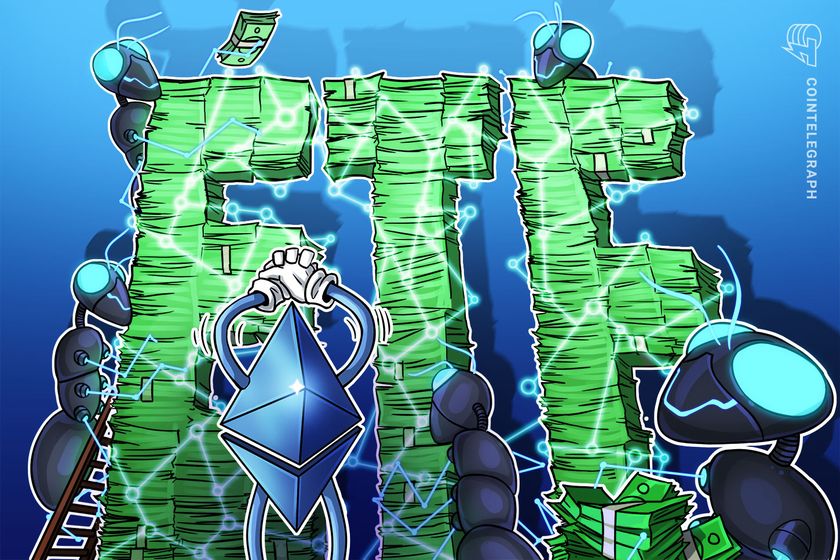How to earn passive crypto income with Bitcoin

Here are some ways to generate crypto-powered passive income with Bitcoin while steering clear of inherent volatility.
Bitcoin (BTC), along with other cryptocurrencies, has provided people with a venue to earn passive income, making money without any active involvement. One doesn’t need to take unnecessary trading risks or spend time reading and analyzing reams of information.
While the concept of passive earning isn’t new, cryptocurrency has undoubtedly added new dimensions to it. Concepts like compounding interest or reinvesting dividends are also applied in the cryptocurrency market, creating an ecosystem where one can earn passively.
Let us discuss various ways to earn passive income with Bitcoin. This article includes interest accounts, lending, mining, trading and liquidity pool.
Bitcoin interest accounts
Keeping Bitcoin in a cryptocurrency savings account is similar to having regular savings accounts. These accounts offer fixed interest on the crypto assets deposited. One may choose flexible savings plans, which allow the depositor to withdraw assets whenever they wish or fixed savings plans, where the assets remain deposited for a predetermined period.
Interest rates are usually higher when one deposits funds for a fixed-term than in a regular savings account. The tenure for fixed term deposits is considerably less than that of conventional bank accounts. On some protocols, there is no minimum deposit requirement as well.
One can also rope in a financial adviser to implement investment strategies like dollar-cost averaging (DCA). The strategy involves investing the same amount of BTC in a target security regularly over a definite period, lowering their average cost per share and bringing down the impact of volatility on their cryptocurrency holdings.
Bitcoin lending
Bitcoin lending occurs when anyone holding BTC lends the cryptocurrency to borrowers through a centralized, decentralized or peer-to-peer (P2P) platform. In return, the borrowers pay daily, weekly or monthly interest. The lending platform usually takes a fee for the service.
The three factors influencing the earnings are the total value of Bitcoin being lent, the duration of the loan and the interest rate. Users need to trust a third party for the Bitcoin lending infrastructure and terms on centralized lending platforms. Most platforms require users to deposit their BTC with the lending platform. While this brings expert-level help to users, their Bitcoin lies in the custody of platforms.
On the other hand, no intermediaries are involved in decentralized lending platforms. Smart contracts automate the lending process, setting aside any human role. Interest rates are finalized autonomously, and the contract is executed once the relevant conditions are met.
On P2P platforms, users can define their individual terms. For example, they can determine the interest rate and the amount of Bitcoin they want to lend. The platform’s role is to provide the necessary infrastructure for completing the deal, and they usually take a fee for their services.
Bitcoin mining
Mining enables one to attain a reward for using computing power to secure the Bitcoin network. Bitcoin is a proof-of-work (PoW) protocol that requires the network participants to solve an arbitrary mathematical puzzle to prevent any unauthorized person or even an insider with mala fide intentions from initiating any changes detrimental to the network.
In earlier days, users mined Bitcoin on regular PCs and then on general-purpose mining rigs. With the growth of the network, however, the complexity of mining increased, and miners were forced to use specially manufactured mining equipment called application-specific integrated circuits (ASICs), which have integrated chips designed for mining.
Miners could set up and maintain mining rigs to bring down their costs. Doing so, however, requires them to have the initial capital necessary along with some technical expertise as they need to maintain Bitcoin mining hardware. This has enabled people to mine Bitcoin without having to invest a great deal of money. Being part of a pool with a lot of computational power gives one a higher chance of generating a winning hash than miners who lack such advanced equipment.
Bitcoin trading
As is the case with all financial assets, the price of Bitcoin is influenced by the laws of supply and demand. Anyone holding BTC can take advantage of the inherent volatility of the cryptocurrency to make money with Bitcoin trading, either by going long or short. Going long refers to selling BTC when prices are going up while going short is the act of selling when prices are going down.
To time the market precisely for making profits is practically impossible for anyone. The basic idea, when going long, however, is to buy BTC when one expects its price to go up and sell it later with a profit margin. For example, if BTC is trading at $20,000 and one guesses it could move to $25,000 or upward, they could buy Bitcoin or swap any other cryptocurrency with BTC, wait for the price to go up and then sell the cryptocurrency, making a clear profit of $5,000.
A shorting strategy is usually implemented by traders when cryptocurrency prices go down. For instance, suppose the price is currently at $20,000, and the trader expects it to drop to $17,000. The trader may sell their BTC right away and later repurchase it when the prices get to the desired level, making a profit of $3,000. The shorting of Bitcoin can be done through its derivatives like futures and options. One could also participate in prediction markets for shorting Bitcoin.
For simplifying trade and minimizing any chances of loss, exchanges allow one to place stop-limit orders. If the prices fall below a certain level, the system will execute the trade independently and limit the losses. To fully automate the trading of Bitcoin, one could use algorithmic trading. Pre-programmed trading instructions are issued based on time, volume and price. When the market triggers the set instructions by the trader, the software executes the orders.
Bitcoin liquidity pool
Liquidity pools, the lifeline of decentralized exchanges (DeXs), can also be a venue for anyone having BTC to make some passive earning. A Bitcoin liquidity pool refers to a digital pile of cryptocurrency locked in a smart contract, thus creating liquidity for quicker transactions.
Users of various crypto platforms, called liquidity providers (LPs), are rewarded with a part of fees and incentives in exchange for the amount of liquidity they have supplied to the liquidity pool. They get paid in the form of LP tokens, which can be used across the decentralized finance (DeFi) ecosystem. UniSwap, SushiSwap and PancakeSwap are some popular DeFi exchanges.
A liquidity pool has cryptocurrencies in pairs, such as BTC-USDT, ETH-USDC, etc. Here is an example to help understand how it works on SushiSwap, with one investing $5,000 in a BTC-USDC liquidity pool. The steps are:

Keep tabs on the changing ecosystem
An ability to make passive income from Bitcoin enhances the value of one’s holdings. Investing in cryptocurrencies always has a risk quotient because of volatility. Still, a passive income enables one to make money steadily without active exposure to the sharp ups and downs in prices. Before deciding on how to make money with passive earning, one needs to do adequate research on expected returns, risk factors, etc.
The cryptocurrency ecosystem is evolving, and new use cases for Bitcoin might emerge, making it imperative for one to keep a constant vigil on the emerging opportunities. Local regulatory sanctions are also an important aspect to consider. Cryptocurrencies, including Bitcoin, are under the watch of regulatory authorities, and one needs to be aware of what they approve and disapprove.
Purchase a licence for this article. Powered by SharpShark.









